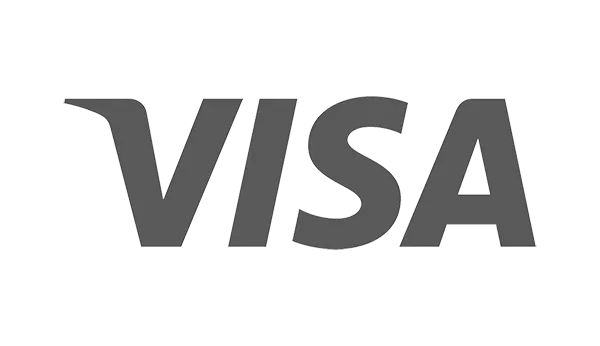Hiring employees that are based in other countries offers business owners an opportunity to gain access to new markets, perspectives, and talent that can help them access clients around the world.
Here is everything you need to know about international HR and hiring a remote global team.

Hiring a global workforce (employees that are based in other countries) offers business owners access to new markets, perspectives, expertise, and talent. It also increases reach by providing access to clients around the world.
Hiring internationally is also great for growing your human capital with remote workers. It might even make your company more attractive to top talent. 61% of employees prefer full-time remote work, and 97% of employees said they don’t want to return to the office full-time post-pandemic.
When you are ready to hire global employees, it's important that you understand all of your options for international human resource management.

Key Considerations of International HR Management
It’s important for companies to manage their global payroll in a way that best meets the needs of their employees, while also helping them meet their business goals. However, when it comes to adjusting your compensation and benefits plan for international workers it can be more complicated than simply adding a few countries to your list of locations.
You'll need to consider:
Compliance to Various Tax and Employment laws
Employers with a global workforce need to be aware of the tax laws in each country in which they have employees, especially if they are operating on a cross-border basis. This includes withholding taxes and other liabilities that may arise from employment status.
For example, some countries have double taxation treaties (DTSs) with others, which allow an employee's income to be taxed only once. However, some countries do not have these treaties or do not offer them to certain categories of workers.
Currency Exchange Rates
When managing employees who work in different countries, you need to be aware of how currency exchange rates affect their pay.
In some cases, your company may have a policy stating that all employees will receive their pay in their home country's currency, regardless of where they work. In other instances, you might pay them in the local currency where they are living and working. If you choose to pay employees in a foreign currency, make sure that they understand what they're getting paid so that it doesn't appear as if they're getting shorted on their salary.
Culture-Specific Benefits
When hiring abroad, you’ll need to understand which benefits are common in the country you’re planning to hire and how they integrate with the local culture.
For example, if you're based in a country where most people have access to affordable healthcare through the government or through their employers, then offering an expensive health plan may not be a good idea. The lack of a local HR team for global employees means that it’s up to you to understand these challenges and manage them accordingly.
International Payroll Compliance
International payroll compliance can be a challenging task — you have to ensure that your international employees are paid on time and in full and that the correct tax is withheld, which will get increasingly complicated the more countries you hire in.
You also need to ensure that you comply with local labor laws, visa requirements (if you are moving employees away from where they have citizenship) and regulations. This must all be accomplished while meeting the expectations of employees around the world. Employees will use their local employment laws and customs for benchmarking their employee experience.

How to Set Up an International Benefit and Compensation Structure
A good starting point for companies that want to grow internationally through a global HR strategy and talent acquisition is to set up a compensation and benefits plan that attracts top talent from around the globe. But how do you go about doing that?
1. Study the Laws and Working Culture of Target Countries
Since countries take different approaches to employee benefits, it’s important to study that country’s laws and benefits before offering an international employee your standard employment package. By doing this research up front, you can avoid any surprises later on in the process.
- Do they have a national health insurance system? If so, what does it cover?
- How long do employees get paid leave after having children?
- Is there a required minimum number of paid vacation days per year?
- How many sick days do employees get per year?
- Do they have laws governing overtime pay and work hours?
- What is their minimum wage?
- How much does it cost to live comfortably in that country (rent, food, transportation and other cost-of-living expenses)?
2. Educate Your HR Team
If no one on your HR team has experience managing international HR benefits and compensation, now is the time to educate them so they can handle this task effectively. HR professionals who deal with a global workforce need up-to-date information on how to set up benefits in each target country, including how much these services cost and how they'll be taxed by each country's government.
Additionally, your human resources team should understand the ins and outs of international staff compensation so they can help you make the right decisions when hiring new employees or negotiating with current ones. They should also be able to explain the global payroll policies to new hires during onboarding, or to workers who are transferring to another country (from within your organization).
3. Establish a Clear Budget for Benefits and Compensation
Once you've completed these tasks, it's time to establish a staffing budget for international benefits and compensation costs — including any taxes that might be levied on these expenses by various governments around the world.
Once you've developed some general guidelines, it's time to take a closer look at each country where your company operates and determine how much money will be needed per month or quarter to pay employees' wages and benefits. Your employees' salaries should be competitive with other companies in the same industry, and also with other companies in their own country.
4. Define Employment Contracts Terms
The best way for a global business to ensure employees are on the same page about what their benefits and compensation package means is by defining key contractual terms at both headquarters and abroad. This includes things like vacation time, sick days, and overtime pay.
Be transparent with your employees so they know exactly what's expected of them at all times. This will help prevent any confusion or misunderstandings down the line when it comes time for reviews or pay adjustments based on performance or other factors.
5. Handle the task In-house or Hire an EOR Expert
Determine what kind of infrastructure your hr department has in place for managing global employment benefits and compensation. In some cases, it may make sense for you to handle this task yourself; in others, it will be better to work with employer of record services that can help you navigate the complexities of international payroll management.
An employer of record allows companies to hire employees abroad without having to set up a legal entity in their country. Most EOR service providers let you hire as little as one worker in another nation by becoming their legal employer on your behalf. Making use of this service can help you pay, provide benefits, and handle taxes for a foreign employee.
They can also help with visa and sponsorship applications, compliance with local labor laws, and have people on the ground that can assist your workers with many other human resource management tasks.

How to Work Asynchronously with an International Team
Asynchronous collaboration is ideal when your team works from different geographical regions. It allows employees to maintain what they consider a regular work schedule according to their location.
In an asynchronous (async) work model, employees complete their assigned work on their schedule, working from different locations and time zones. The team has the freedom to choose a flexible work schedule and perform their tasks when they are most productive — as long as they finish their work. Naturally, communication is important to maintain employee engagement and productivity.
You need to adopt the best possible asynchronous communication tools for this model to work effectively. Since employees are available at different times of the day. The communication may be done through tools or platforms such as email, project management software, performance management tools, messaging via communication platforms like Teams or Slack, collaboration tools like G Suite, etc.
It's advisable to have a clear policy detailing the preferred collaboration methods for effective communication. For example, you could designate email for general communications, voice messages for delivering complex information, project management software, and G Suite for sharing documents and project updates, and so forth.
Pros of Asynchronous Collaboration
- Gives employees more control over their workday: Working under a flexible work arrangement allows employees to adopt a schedule that's most convenient for them. In addition, it gives them the autonomy to work at their own pace, which helps improve productivity.
- Reduces pressure on the employees: With asynchronous collaboration, employees can choose to work when they are most productive. This leads to better planning, thus enhancing their input on projects.
- Better collaboration across different time zones: As there's no pressure to engage in real-time communication, the employees can communicate or provide feedback when it's most convenient for them, which fosters better collaboration across varying time zones.
- Boosts employee satisfaction: Async working gives employees the flexibility of working when it best suits them. As a result, they maximize their time, leading to increased productivity and, ultimately, employee satisfaction.
The Best Tools for Global Remote Teams
Fortunately, the increase in remote companies has meant an increase in software and tools built to help remote work. Our team has been working remotely for many years, and these are some of our favorite tools to stay connected and productive as a distributed, remote company.
Notion
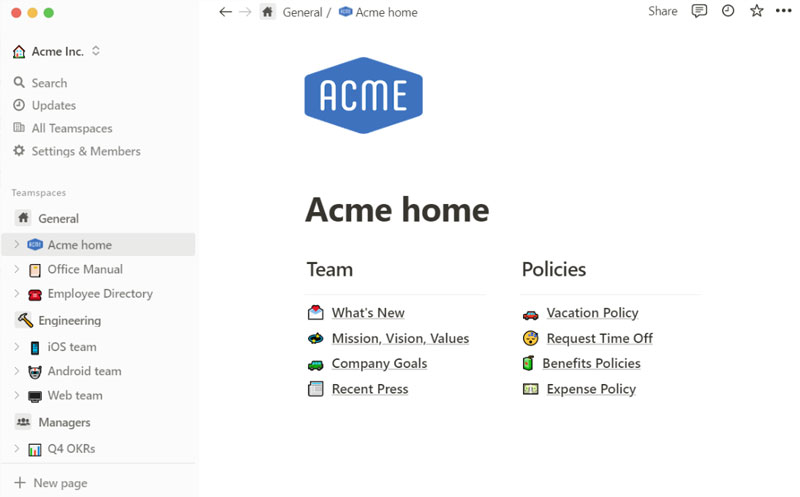
Notion is your team’s hub for asynchronous communication. It’s like your company’s Wikipedia, where you can find information at a high level (such as company policies and team directories), or at a granular level (daily meeting notes, to-do lists, brainstorming). Notion’s collaborative platform makes it easier to work with distributed teams by allowing you to edit docs seamlessly without stepping on anyone’s toes.
The platform let you set up a Hub for your department where you keep reports, meeting notes, and project breakdowns. Employees can also create a private To-Do list kan-ban style, view it as a calendar, and then check it off one by one. Notion is one of the most powerful tools we have used to make working as a global team feel effortless.
The Cost:
Notion has a free version for individuals with unlimited pages and up to 5 guests, and their business plans start at $8/user/month.
Google Workspace (Formerly G Suite)
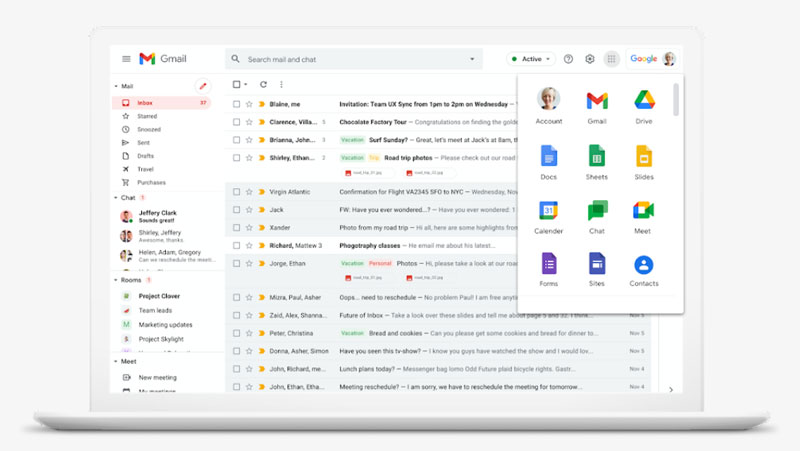
Google Workspace (also known as G Suite) is an affordable platform by Google that gives teams a way to collaborate on Google Drive, Google Mail (Gmail), Google Docs, Google Slides, Google Sheets, and via Google Meet (along with some more easy-to-use Google Drive tools). You can keep a personal work calendar or share a team calendar, all from the same suite of products.
Your team can use the Google Workspace products to get started quickly when working remotely, since most of your resources will be centralized and easily accessible. Google Drive can become particularly useful for remote hires when it comes to organizing and sharing onboarding documents in nested folders.
The best part is that the entire concept is focused on collaboration, and gives distributed teams the ability to work together online in real-time across a suite of products, whether they’re in the same room or 5,000 miles away.
The Cost:
Google offers a free “Google One” plan for individual users using 15 GB of data or less, and their business plans start at $6/user/month for 30 GB per user.
Zapier
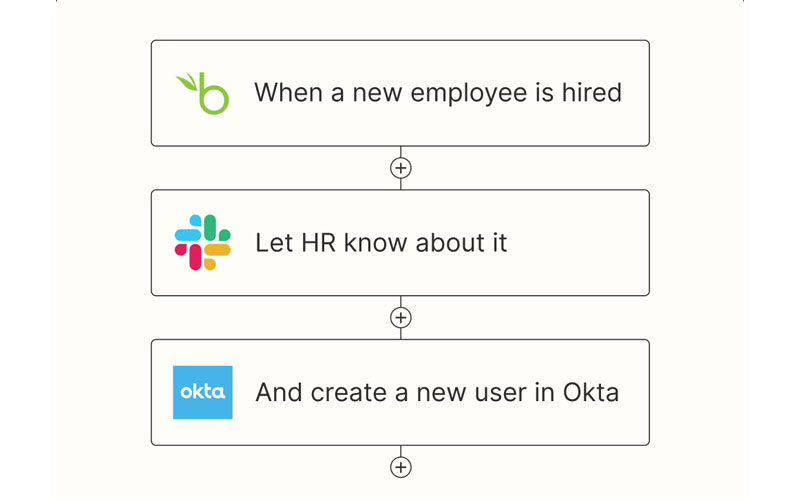
Zapier allows you to automate your work (or life) across 5,000+ apps. Simplify small everyday tasks, such as sending reminders in Slack, or create multi-step workflows with customized if/then logic to work exactly how you would (without having to lift a finger).
Since Zapier is a no-code tool, anyone can get started immediately on the platform and save several hours per week by automating repeat tasks. All those manual tasks that come with the world of remote work can be set and left, so you can focus your energies on bigger projects.
The Cost:
Zapier has a free version but it only allows you to create single-step “zaps” (workflows in Zapier) with a max of 5 zaps total. Their paid plans start at $20/month for 20 zaps, and they also offer plans for big teams with unlimited users and unlimited zaps.
On a side note: We love Zapier because, like us, they are a 100% distributed company. They have employees in 17 time zones and are no strangers to remote work.
Loom
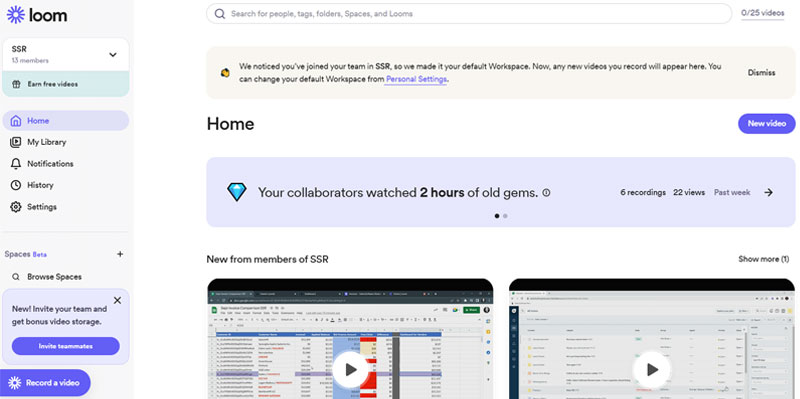
Have you ever wanted to record a quick clip of your screen to share something with a team member? Loom allows you to ask questions and exchange knowledge without time zones or busy calendars getting in the way. It’s a great tool for aligning distributed teams with clear and constructive feedback, with asynchronous video recording that lets you convey tone, mark up your screen, and record your message with context.
Instead of spending significant time and effort to document your asks or feedback in writing, simply click record and update your team effortlessly with short videos. Once you’ve recorded something you want to share, just paste a link to your video and send it to your recipients who can watch it without logging in or creating an account.
The Cost:
Loom offers a free plan with up to 25 videos per person up to 5 minutes, and their paid plans start at $10/user/month.
Remofirst
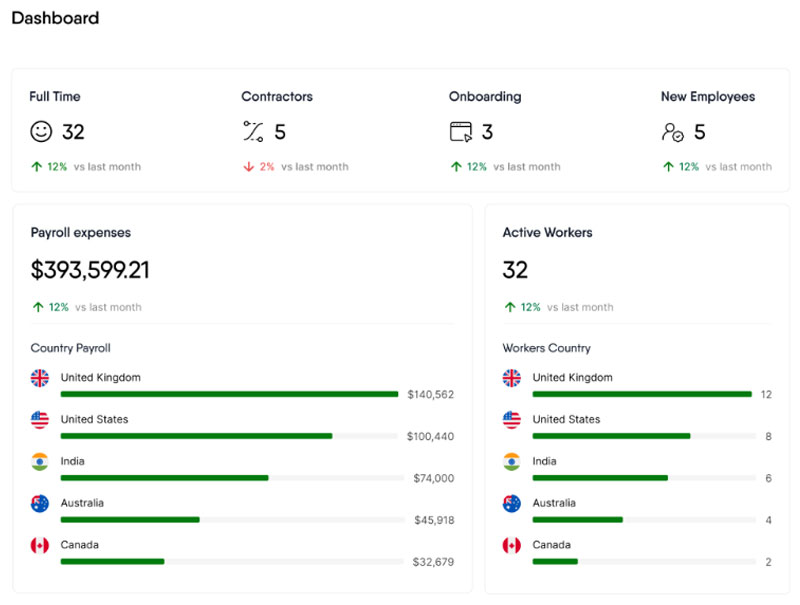
To put it simply, the future of work is distributed and global, but the process for hiring talent in every corner of the globe is still as complex as it has ever been. That is what Remofirst helps you solve. The platform lets you employ talent in more than 150 countries through their employer-of-record platform. Whether you want to simulate the cost of hiring a key engineer in Poland or you want to send a laptop to a new hire in Portugal, Remofirst can help.
As a remote-first organization, the Remofist team understands the benefits and challenges of building and managing remote teams, and are excited to build the future of work with their customers!
The Cost: Remofirst’s pricing starts at $199/month for full-time employees, and is free for international contractors.
Benefits of an International Workforce
The proliferation of new technology to enable global communication and the massive market opportunity means that more businesses are looking at global expansion. Business owners are looking for growth opportunities around the world, and hiring international employees can be a game changer for your company.
International employees can bring various benefits thanks to their skills, experience, and knowledge. Benefits of hiring overseas employees include:
Access to Skillsets of a Wider Talent Pool
While your country's labor force might be large, it's still a fraction of the number of people who are looking for work worldwide. For example, countries in Europe, Latin America, and the Middle East have seen very high growth rates for Engineers and Software developers. These countries also have the necessary competencies and tools to work with international teams.
Opening your talent acquisition and hiring process to international candidates (as opposed to recruiting in the U.S. alone) means that you'll have a larger group from which to choose. This is particularly important if you're trying to find talent with highly specialized skills and experience.
Language Skills
Hiring international employees gives you access to people who speak multiple languages. This can be extremely helpful if you need to communicate with partners, stakeholders, or clients who use these languages on a routine basis.
It's also helpful if you're looking to expand into certain markets; having someone who speaks the language will make it easier to, build relationships, create content, and manage international assignments for those areas.
Global Awareness
Your international employees can help you gain a better understanding of different markets in your globalization strategy and give you insight into how your business is perceived in those places. Thereby you can tailor your product or service according to these countries so that it is sensitive to cultural differences around the world.
Reduced Costs
In some cases, it may be more cost-effective to hire international remote workers than it would be to send your local employees abroad for international assignments.
For example, the average 3-year expatriate assignment costs $1 million. Hiring international employees allows you to expand your team without having to go through the hassle, expense, and disruption of relocating a key employee.
All in all, hiring an international workforce is the future of work.










